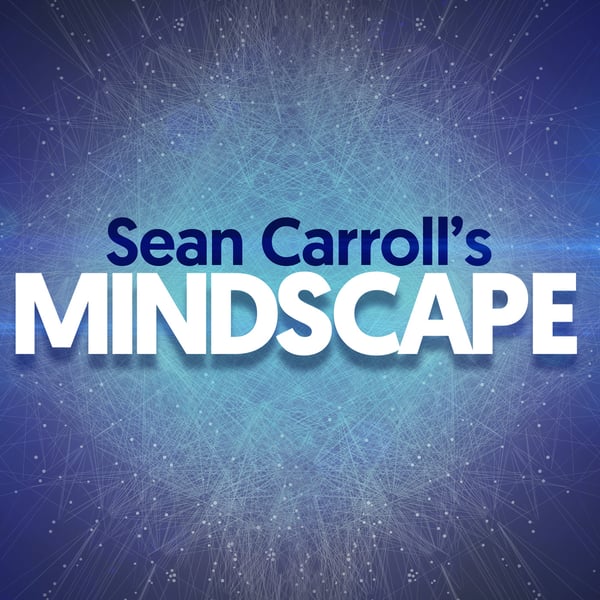146 | Emily Riehl on Topology, Categories, and the Future of Mathematics
Sean Carroll's Mindscape: Science, Society, Philosophy, Culture, Arts, and Ideas
Sean Carroll | Wondery
4.8 • 4.4K Ratings
🗓️ 10 May 2021
⏱️ 77 minutes
🧾️ Download transcript
Summary
“A way that math can make the world a better place is by making it a more interesting place to be a conscious being.” So says mathematician Emily Riehl near the start of this episode, and it’s a good summary of what’s to come. Emily works in realms of topology and category theory that are far away from practical applications, or even to some non-practical areas of theoretical physics. But they help us think about what is possible and how everything fits together, and what’s more interesting than that? We talk about what topology is, the specific example of homotopy — how things deform into other things — and how thinking about that leads us into groups, rings, groupoids, and ultimately to category theory, the most abstract of them all.
Support Mindscape on Patreon.
Emily Riehl received a Ph.D in mathematics from the University of Chicago. She is currently an associate professor of mathematics at Johns Hopkins University. Among her honors are the JHU President’s Frontier Award and the Joan & Joseph Birman Research Prize. She is author of Categorical Homotopy Theory, and co-author of the upcoming Elements of ∞-Category Theory. She competed on the United States women’s national Australian rules football team, where she served as vice-captain.
See Privacy Policy at https://art19.com/privacy and California Privacy Notice at https://art19.com/privacy#do-not-sell-my-info.
Transcript
Click on a timestamp to play from that location
| 0:00.0 | Hello everyone, welcome to the Mindscape Podcast. I'm your host Sean Carroll. We've done a lot of |
| 0:04.4 | sort of science on the podcast over the years, as it were. The podcast is old enough, I can now say |
| 0:09.9 | over the years. Wow, that's pretty impressive. And doing science when you try to talk about science |
| 0:14.5 | to an audience which is not necessarily full of specialists in that particular kind of science, |
| 0:20.1 | what do you do? How do you talk about science to non-scientists? Well, the very first thing you do is |
| 0:26.4 | you strip out all the math, right? You assume that the people listening are not necessarily familiar |
| 0:31.5 | with the equations, the symbols, the manipulations that the professional scientists have to go through |
| 0:36.8 | to understand their field. But you can nevertheless, even without the math, you can talk what the |
| 0:42.0 | concepts the scientists are dealing with. This raises a puzzle when the thing you want to talk about |
| 0:47.9 | is math. We haven't talked about math as a pure subject that much here on Mindscape. We did talk to |
| 0:54.8 | Stephen Strogatz, who's a professional mathematician, but he's very close to being a physicist in many |
| 0:59.8 | ways. We haven't quite ascended to the truly abstract realms of very pure mathematics. So, |
| 1:06.5 | that's what we're doing here today. Pure mathematics, no equations, but we're going to try to talk |
| 1:12.0 | about the concepts that you come across at the most elevated realms of mathematical thought. Our |
| 1:18.2 | guest today is Emily Reel, who is a topologist at Johns Hopkins, and she's a very big believer in |
| 1:23.9 | being able to conceptualize these deep mathematical ideas in the simplest and best way possible. So, |
| 1:30.0 | she's a great person to guide us on this tour. And the foundational idea we're going to be talking |
| 1:35.4 | about is topology. Topology is the study of the properties of mathematical spaces that are |
| 1:42.0 | invariant when you swish them, when you smoothly deform them a little bit, right? Like, if you have |
| 1:47.7 | some clay that is molded into a shape, you can talk about the number of holes in the shape of |
| 1:53.7 | clay that you have. And then if you move around the clay a little bit, if you don't rip it, |
| 1:58.3 | the number of holes will remain constant. So, that's a topological invariant. It turns out, and this |
... |
Please login to see the full transcript.
Disclaimer: The podcast and artwork embedded on this page are from Sean Carroll | Wondery, and are the property of its owner and not affiliated with or endorsed by Tapesearch.
Generated transcripts are the property of Sean Carroll | Wondery and are distributed freely under the Fair Use doctrine. Transcripts generated by Tapesearch are not guaranteed to be accurate.
Copyright © Tapesearch 2025.

